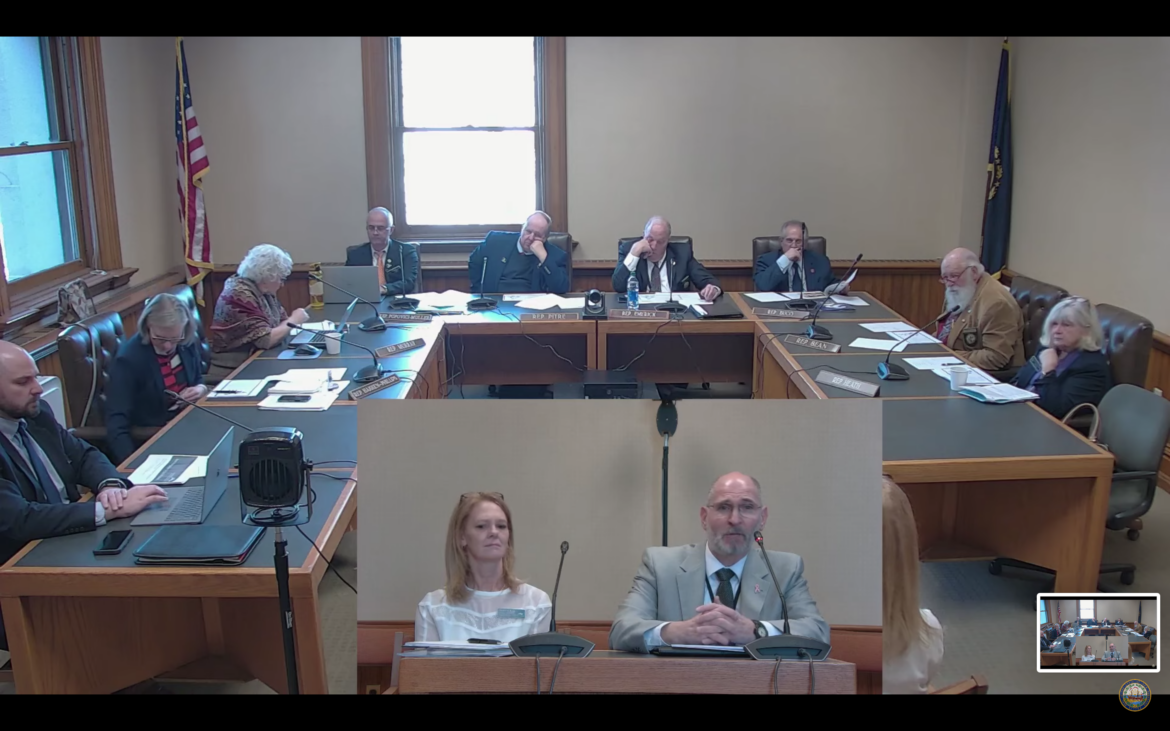By GARRY RAYNO, InDepthNH.org
CONCORD — After several years of considerable revenue surpluses, the state’s higher education institutions are seeking to at least return to levels of support they had more than a decade ago when state support was slashed in half.
The Community College System of New Hampshire has held tuition flat for 12 years and the University System of New Hampshire has held tuition flat for five years.
But both system officials note in meetings with members of a House Finance subcommittee Tuesday that inflation has eaten away at their work to make higher education more affordable while they try to add talent and skills to the state’s workforce.
Business representatives are pushing for additional state funding to help the state’s economy and retain those students with skills and talent that could help companies at home and not in other states.
Both institutions are facing a demographic crisis as fewer and fewer students are attending Kindergarten through 12th grade here and in New England, creating a very competitive market for 18-year-old high school graduates, officials said.
The University of Maine and the State University of New York have media campaigns to draw students with competing billboards on the Spaulding Turnpike offering the same or lower tuition than they would pay at the University of New Hampshire, members of the House Finance subcommittee were told.
“We need to do a better job competing across the region,” said Tom Cronin, Assistant Vice President of Public Affairs for the university system. “Everyone is competing and we are asking for additional dollars to do that.”
The university system is asking for a total of $199.4 million over the biennium which would be essentially the same state support it received in the 2010-2011 biennium, before state support was cut in half for the 2012-2013 biennium.
Cathy Provencher, the Chief Administrative Officer for the university system, said $50 million in operating costs were cut between fiscal year 2019 and 2022 to try to “right size” the system to the number of students.
She said much of the decrease came from a voluntary reduction of 480 positions among faculty and staff, although some of those positions have had to be refilled.
The work and strategic planning to “prepare for the headwinds coming our way,” Provencher said, resulted in Moody’s bond rating agency raising the system’s outlook from negative, which is the rating for almost all higher education, to stable.
She said while tuition has been flat, the university system has increased financial aid to students lowering the cost and making a college degree more affordable.
The state’s support goes largely to subsidizing tuition for in-state students, who amount to about half of the students in the system, she said.
But she noted the system has the best six-year graduation rate for public systems in New England and its students have the lowest loan default rate in the country although New Hampshire students have one of the highest debt loads in the country due to the state’s limited support.
Provencher said the university system produces 2,000 graduates a year for the New Hampshire workforce, which Cronin said is businesses’ number one priority.
Community College
The community college system is asking state budget writers for a biennial increase of $1.36 million for a total of $115.36 million over the biennium for its operating budget, and $3.1 million for STEM programs in partnership with high schools, a $90,000 increase over current funding.
While the system has effectively not raised tuition for the last 12 years, the requested operating increase of 3 percent for the 2024 fiscal year is well below inflation, said system chancellor Mark Rubinstein.
He said by holding tuition flat, Pell Grants have caught up and a full scholarship under the federal program would cover the cost of a year at a community college campus.
But he noted state support for affordability for state students is critical to increase accessibility for those using the system’s services.
The community college system is also seeking an additional $2.4 million in fiscal 2024 and $4.6 million in fiscal 2025 to continue to freeze tuition.
Other priorities include $1.25 million in each fiscal year to expand the workforce credential program, $1.5 million each fiscal year to expand childcare workforce tuition support, and $1.75 million each fiscal year to expand the dual and concurrent program.
Also, the community college system seeks $8 million a year to lower tuition costs, and $9.3 million for solar projects to improve energy efficiency.
Rubinstein told the committee over the last decade, the system has reduced its workforce by 30 percent mostly through attrition, but has concentrated on programs that address critical needs, like nursing, healthcare and child care that do not cover costs with tuition, while lower cost programs like liberal arts and business are seeing enrollment decline.
Rubinstein said each college campus has a center to address local business needs and works with them to institute programs to provide the education and skills they need in workers.
Committee member Mary Heath, D-Manchester, praised the system’s nimbleness to adapt quickly to community needs such as nursing programs.
Several committee members wanted to know if the people attending the community college system remain in New Hampshire or if they take their talents out-of-state.
Rubinstein said the system’s typical student is not a 22-year-old who is willing to move anywhere for the right position, but older folks who need short term courses, who have a job and often a family to support.
Those students are not seeking to move, because they are already a part of a community, he said.
Rubinstein said while the community college system lost students as all higher education institutions did because of the pandemic, it was not because of the smaller number of students in the secondary school system.
The community college system growth is from people needing new skills with changing technology or want to do something else and need more education or training.
He said the system’s most stable offerings are in healthcare and tech programs like automotive technicians.
The dual and concurrent programs for high school juniors and seniors have been very successful, Rubinstein said, and they are requesting additional money to expand them.
But he noted, those students do not often go to the community college system once they graduate.
Either they go to college with a year’s worth of credit or go into the service or something else knowing they have earned college credits, he said.
“We want to create an affordable pathway to an affordable education,” Rubinstein told the committee.
Two years ago in his budget address, Gov. Chris Sununu sought to merge the two systems, but lawmakers balked, afraid the community college system would be swallowed by the larger university system and removed most of his plan from the two-year budget package.
Officials from both systems will meet with the sub-committee next week for more detailed budget discussions after Sununu gives his budget address Tuesday.
Garry Rayno may be reached at garry.rayno@yahoo.com.





